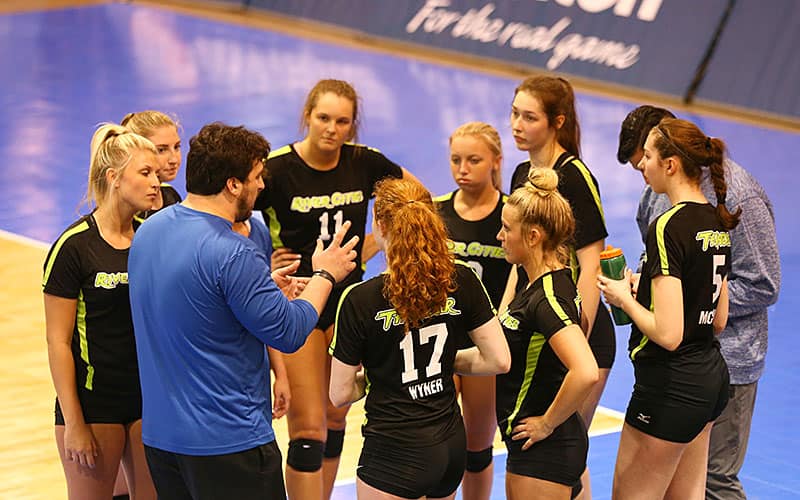
By now, your teams have been selected and you will have had conversations with parents who are wondering why their amazing child is not starting on the No. 1 team in your program. What follows are some ideas and valuable links to helping your parents be part of your “team around the team,” and not a thorn in your side.The reason for the title of this blog is important. Too often coaches say “my kids,” and while I understand the wording, I think it’s crucial to remind yourself that you have only a few hours to impact, teach and care for your players.The parents are the ones who do the real work: housing “your player,” taking the kid to school, feeding the child, caring for them when they are sick. It is their role as a parent, and sports are just a small part of the kid’s life. What we want to do is make it as effective as possible to teach autonomy and leadership while playing a game in the process.In my kitchen is a sign, a quote from Hodding Carter that says “Our job is to give them roots, and wings.”Parents and coaches seem to forget that our work with every child is to make ourselves unnecessary, to allow those we are teaching to not need to look at us on the sideline for the answers, but to know how to figure it out themselves.I think one of the key lessons we need to share with parents is that we want the kids to speak for themselves, not have a parent do it for them. This message of having the athlete speak first and primarily is again part of developing the kids’ ability to stand in life on their own and not expect the helicopter, bulldozer, lawnmower or atomic bomb parenting to be part of your program’s life lessons processes.
Teach Them To Do It Themselves
When I grew up, I watched my parents play sports – beach volleyball in the 50s, fishing, golf. I even spent time with Jack Nicklaus, Gary Player and Bruce Crampton when they came to the Shell’s World of Golf at our golf club in my hometown of Camarillo, Calif.My high school golf teammate Cory Pavin went on to great success in the PGA, but I remember how we would be the first on the course, writing our names in cursive in the dew on the grass for those teeing off later to see. We played a lot of golf to get better at golf, but I rode my bike and did it on my own.Now, parents spend much of their free time watching their kids play. This reversal means that parents judge their parenting on how well their kids perform and move up the pipeline.Athlete Development
Next week, the USOC is hosting a summit on the American Development Model (ADM). The ADM is a version of long term athletic development which many of my fellow sport developers and coaching educators from other National Governing Bodies have been working on to help coaches, parents and players.Several USAV regional leaders will be attending, with two even staying at my home to save money and to be able to ponder together late into the night. As you can see from the agenda, it promises to be a great learning opportunity. Look for a follow-up blog on this summit after the NCAA Championships in Minneapolis.Until then, I wanted to share these must-view links, which will help guide your own discovery on being a better performance partner with your parents.- Wayne Goldsmith, a longtime sport leader friend of mine from Australia, has this great section about working with parents. Start with his 50 tips for parents that you as their coach can be a partner to.
- TrueSport has some excellent material for hand out, so you look more professional thanks to their solid design work.
- The Promise of Good Sports program leads clubs in a special practice where the team players set their goals while the parents and coaching staff submit their goal requests to the players to add. Then, the players teach their parents the skills of volleyball followed by a 5-10 minute game where the athletes first yell at their parents the way they DON’T want to hear their parents from the stand. The second half of the game, players yell the way they would like to hear their parents. Check with your USAV region for more on implementing this special session if you wish. We did it this season in November with my teams.
- Frank Martin on coaching from the stands
- Sports Parent Support Group by Nova Scotia Sports

